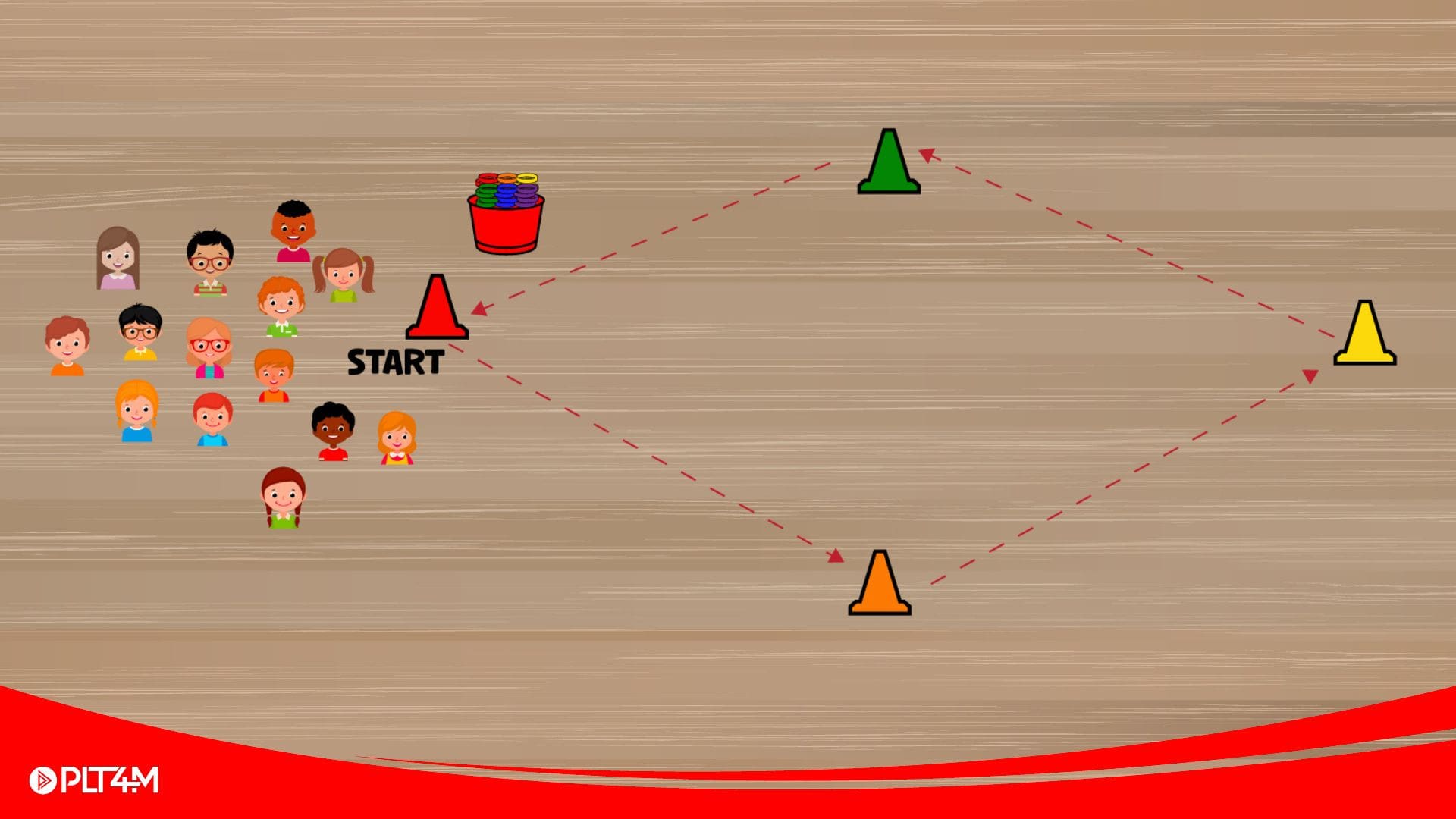These days, everywhere you look, someone is touting the newest and best way to make better football players, or volleyball players, or track athletes. Unfortunately, with so many out to make a buck, sometimes the real goal gets lost in the mix.
When dealing with High School athletes, we must keep the proper perspective. We’re dealing with teenagers, all at the very beginning of their athletic/fitness careers. Even when talking “sports performance training”, our true role is one of educator.
Step 1: Build a Proper Foundation
First and foremost, we must ensure that we aren’t ignoring an athlete’s long-term athletic development or “LTAD” (see our article on that here). Before we talk 40 times and squat maxes, we have to progress each and every athlete from the bottom up.
Want your senior captain squatting over 400 pounds? First they must master a proper air squat.
Only upon a secure foundation can we actively improve “performance” on the field. Too often, coaches are in a rush. We want results and we want them now. Instead of spending time learning the basics and developing a baseline ability, we throw inexperienced athletes into advanced training programs and expect them to perform.
This is both inefficient and dangerous.
The shortest path to any goal is a straight line. The only way to yield long-term results is through planning and progression. We must set common foundations, progress athletes through a holistic fitness education, then transition into more advanced performance programs that allow them to realize their fullest potential.
Step 2: Master the Basics… (Then master them again!)
High school athletes are NOT specialists.
As track coaches, basketball coaches, lax coaches, etc…it’s easy to forget that your athletes exist beyond and outside of your sport. An overwhelming majority, though, of high school athletes compete in multiple sports (as they should!).
If we have an athlete that plays 2 or 3 different sports throughout the year, how do we justify them specializing in their training at any point? Worse than hindering progress, this can inadvertently lead to an increased incidence of injury. By definition, “specializing” in something must come at the expense of something else. Imbalances are often the root cause of injury. You cannot be specialized and well-rounded at the same time.
We believe the best athlete is a balanced athlete.
Every athlete (every human) should be taught strength. It’s the basis of a healthy life. But, strength is only valuable to an athlete when it can be combined with contractile speed to produce power, so we combine traditional strength development with plyometrics and high velocity olympic lifts. Even power, though, is only good when it can be exercised with control and precision. So, we refine it by enhancing proprioception through mobility focused compound movements like the overhead squat, and targeted neuromuscular activity like jumping rope or agility ladder progressions. Beyond that, this newfound ability will only be beneficial if the athlete stays healthy and can fight off fatigue. Being such, we place a heavy emphasis on proper injury prevention and recovery as well as conditioning through a number of different methods. From classical aerobic conditioning, to interval work, to high intensity Metcon (Metabolic Conditioning) workouts.
We firmly believe that such a holistic training program will build a better football player, soccer player, track athlete…you name it. The skills may vary widely between sports, but the physiological requirements are far more universal.
[/vc_column_text][/vc_column][/vc_row][vc_section][vc_row][vc_column][vc_separator][/vc_column][/vc_row][vc_row][vc_column][vc_row_inner][vc_column_inner][vc_column_text]Check out how schools across the country are using PLT4M to empower their strength and conditioning programs.
[/vc_column_text][/vc_column_inner][/vc_row_inner][/vc_column][/vc_row][vc_row][vc_column width=”1/3″][/vc_column][vc_column width=”1/3″][vc_btn title=”Request A Demo” link=”url:https%3A%2F%2Fwww.plt4m.com%2Fwant-to-see-more%2F|title:Want%20to%20See%20More%3F||” el_class=”red_button”][/vc_column][vc_column width=”1/3″][/vc_column][/vc_row][vc_row][vc_column][vc_separator][/vc_column][/vc_row][/vc_section][vc_row][vc_column][vc_column_text]Step 3: Challenge Your Perspective
Perhaps most important, though, is a reminder and understanding of who, exactly, we are training.
As high school coaches, we all want the same thing. We want to develop more dynamic athletes and better teams. But, training high school athletes is a highly unique endeavor. We tend to forget that, when it comes to performance training, the athletes in question are just plain young and inexperienced.
For the overwhelming majority of your athletes, their high school years will be the first time ever involved in an athletic strength and conditioning program. High school students lack a solid foundation of functional fitness on which to specialize. Most can barely squat or perform a deadlift properly, let alone do so with heavy weight or in any fancy variation. It is absolutely imperative these athletes are all given a comprehensive program that works to build a complete athlete from the ground up. We owe it to them as young athletes, as well as young adults who need to go on living healthy lives long after they finish our sport.
If your 18-year-old offensive lineman is scared to jog a mile because of a sole focus on size, you’ve done his long-term health a serious disservice.
Any athlete that commits to a complete training program with consistency will see results that translate not just in sport, but in life.
Want to see how we can help you educate and train your athletes? Click here!
**Where do these beliefs come from? Well, first and foremost it comes from real-life experience. Not only does the entire PLT4M team come from athletic backgrounds (we were all multi-sport HS athletes that went on to compete at the collegiate level), but it shares experience teaching and coaching at the college and high school level as well. Our team of trainers runs the gamut from CSCS coaches through the NSCA, to certified PE teachers, to credentialed trainers through Crossfit and USAW. We all still regularly work with athletes of all levels and experience. To make a long story short, we understand the issues facing high school teachers, coaches, and student-athletes because we’ve lived them. Our cumulative experiences have brought us to a common place in regards to strength and conditioning/fitness, and this vision is what shapes our programs here at PLT4M.**
[/vc_column_text][/vc_column][/vc_row]





